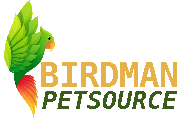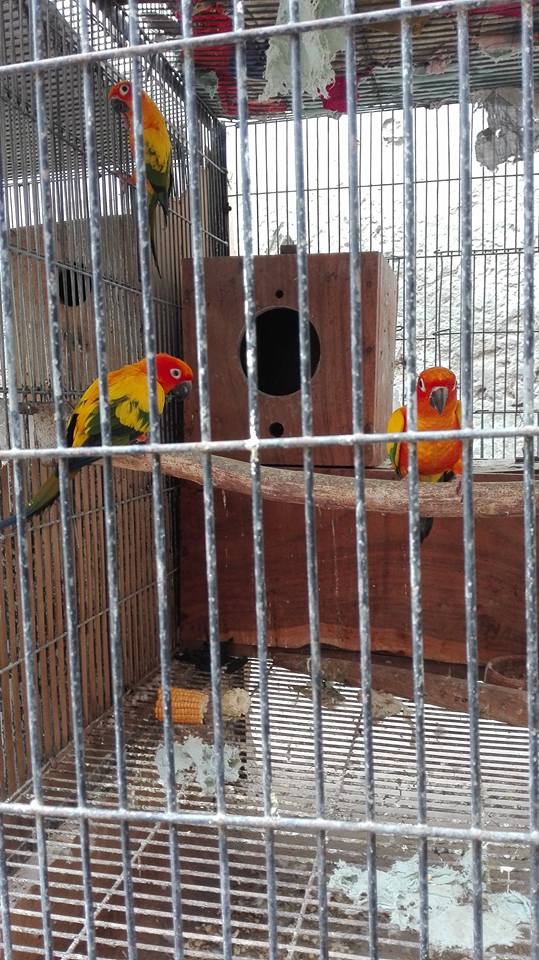Description
Description
Sun conures are found only in tropical habitats, preferring to live on open savannah or within dry savanna woodland. They are also commonly found in scrublands (usually along the Amazon riverbank) and forested valleys, as well as in coastal and seasonally flooded forests. Preferring an altitude of less than 1200 meters, these birds sometimes live in valleys or near mountain slopes. They tend to inhabit palm groves and anywhere where trees or bushes are fruiting profusely. The base of the greater wing-coverts, tertials, and base of the primaries are green, while the secondaries, tips of the primaries, and most of the primary coverts are dark blue.
Behavior of sun conures
A group of sun parakeetsLike other members of the genus Aratinga, the sun parakeet is very social and typically occurs in large flocks of 15 to 30 individuals. They rarely leave the flock, but when they get separated from the group, they squawk and scream in a high-pitched voice which can carry for hundreds of yards, allowing individuals to communicate with their flock and return to them. Flocks are relatively quiet while feeding, but are known to be very vocal and make loud noises when in flight. They can travel many miles in a single day, and they are fast, direct flyers. Nonverbal communication is also practised, with a variety of physical displays. Birds within a flock rest, feed one another, preen, and bathe throughout the daylight hours. They move through the trees using their beaks for extra support. They also have the ability to use their feet like hands to help hold, examine, or eat items. Sun conures have been reported to nest in palm cavities. When in molt, conures are uncomfortable, so are easily irritable. Bathing, warm rainfalls, and humidity allow the sheaths of each pin feather to open more easily and lessen their discomfort. Sun conures are extremely smart and curious, so require constant mental stimulation and social interaction. Their speech and ability to learn tricks in captivity are quite moderate. Otherwise, relatively little is known about their behavior in the wild, in part due to confusion with the sulphur-breasted parakeet species. Regardless, the behavior of the two is unlikely to differ to any great extent.
Diet
In the wild, sun conures mainly feed on fruits, flowers, berries, blossoms, seeds, nuts, and insects. They feed on both ripe and half-ripe seeds of both fruits and berries. They also consume red cactus fruit, Malpighia berries, and legume pods. At times, they forage from agricultural crops and may be considered pests. They require more protein intake during breeding season, more carbohydrates when rearing young, and more calcium during egg production.
In captivity, their diets may include grass seeds, beans, nuts, fruits (apples, papaya, bananas, oranges, grapefruits, strawberries, raspberries, blackberries, gooseberries, currants, rowans, elderberries, hawthorn berries, rose hips, cucumbers and tomatoes), vegetables (spinach, Chinese cabbage, cress, roquette, kale, broccoli, carrots, alfalfa, peas, endive, and sweet potatoes), dandelions, chickweed, soaked corn, germinated sunflower seeds and spray millet. They may also eat fruit tree buds (elderberry bushes, willows, hawthorn, and aspen), ant eggs, mealworms or their substitutes (hard-boiled eggs, bread, biscuits, hard cheese or low-fat cottage cheese). Cuttle bones, mineral blocks, and gravel or ground oyster shells may be given to aid in mechanical digestion.
Please do contact us for any more information





Reviews
There are no reviews yet.